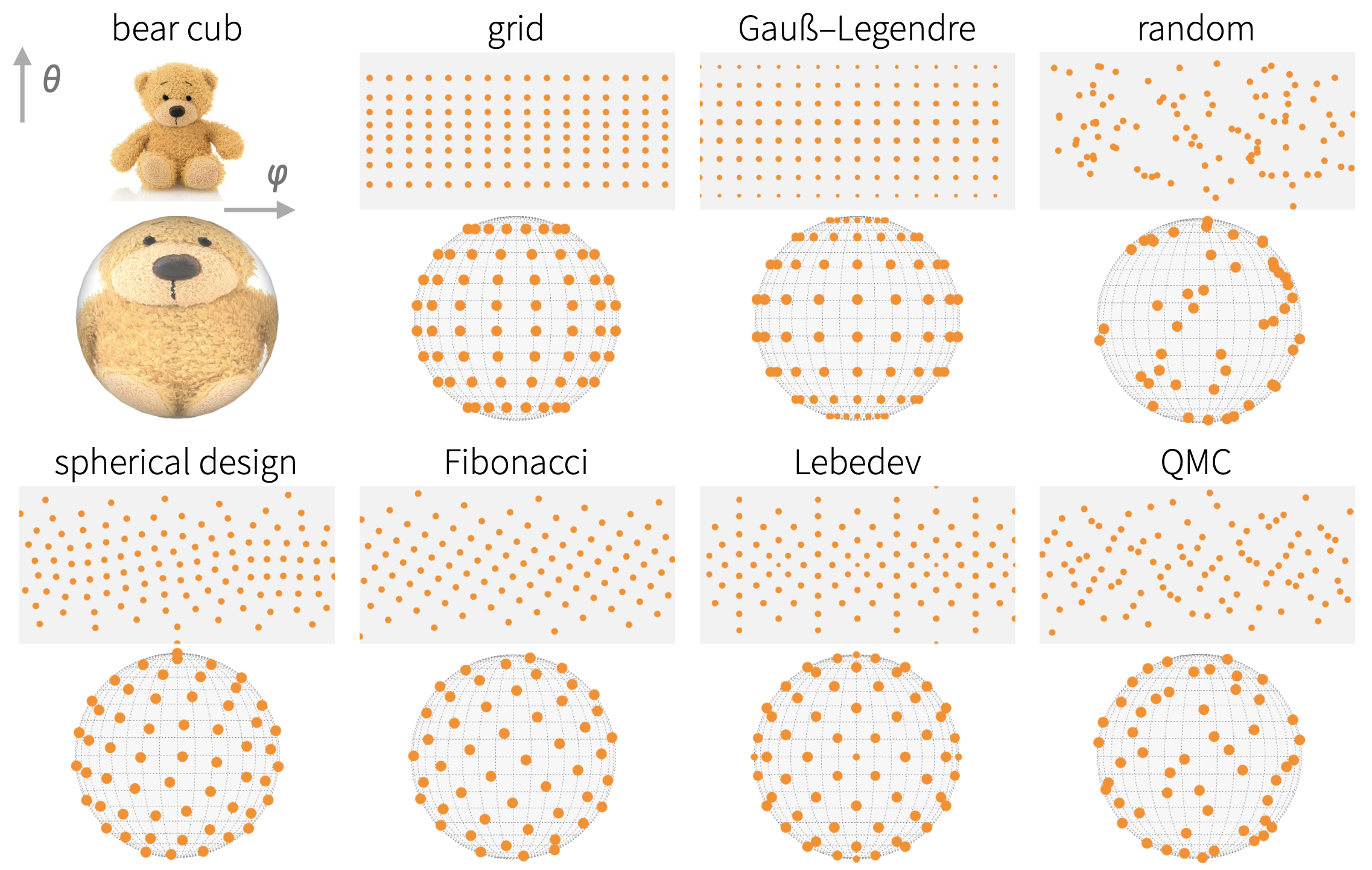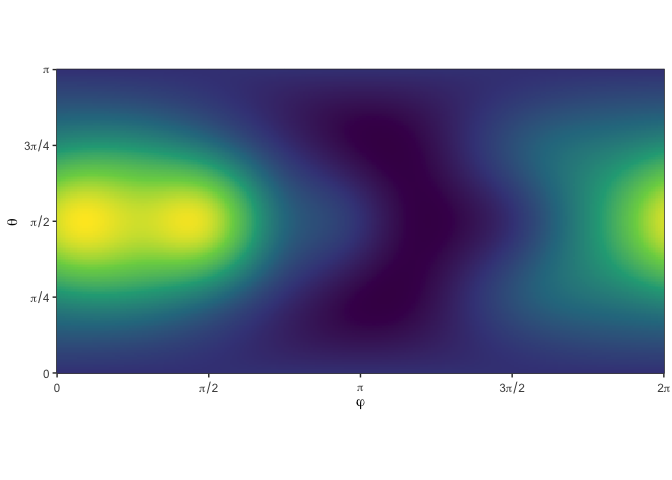cubs is a utility package wrapping several commonly-used spherical cubature rules in a convenient interface:
LebedevSpherical t-DesignsGauß-LegendreFibonaccigridQuasi Monte-Carlorandom

cubs
Installation
You can install from GitHub with:
# install.package('remotes')
remotes::install_github('nano-optics/cubs')Simple example
Let’s request a Lebedev cubature with approximately 10 points,
cubs(N = 10, 'lebedev')| phi | theta | weight | |
|---|---|---|---|
| 1 | 0.0000000 | 1.5707963 | 0.0666667 |
| 2 | 3.1415927 | 1.5707963 | 0.0666667 |
| 3 | 1.5707963 | 1.5707963 | 0.0666667 |
| 4 | -1.5707963 | 1.5707963 | 0.0666667 |
| 5 | 1.5707963 | 0.0000000 | 0.0666667 |
| 6 | 1.5707963 | 3.1415927 | 0.0666667 |
| 7 | 0.7853982 | 0.9553166 | 0.0750000 |
| 8 | 0.7853982 | 2.1862760 | 0.0750000 |
| 9 | -0.7853982 | 0.9553166 | 0.0750000 |
| 10 | -0.7853982 | 2.1862760 | 0.0750000 |
| 11 | 2.3561945 | 0.9553166 | 0.0750000 |
| 12 | 2.3561945 | 2.1862760 | 0.0750000 |
| 13 | -2.3561945 | 0.9553166 | 0.0750000 |
| 14 | -2.3561945 | 2.1862760 | 0.0750000 |
Lebedev, 10 points requested
Let’s try a known integrand,
f1(x, y, z) = 1 + x + y2 + x2y + x4 + y5 + x2y2z2
with the usual spherical coordinates.
We want to estimate the integral numerically, i.e. with a spherical cubature

We compare the exact value, 216π/35, to the Lebedev cubature for increasing number of points.
| source | value |
|---|---|
| lebedev N=14 | 19.5476876223365 |
| lebedev N=26 | 19.3881146621542 |
| exact | 19.3881146621542 |
Acknowledgements
This package merely wraps existing rules in a convenient interface; the original cubature points were obtained from:
-
Lebedev: from John Burkardt’s webpage, using theSPHERE_LEBEDEV_RULEC routine. The routine itself implements the original reference by Lebedev and LaikovVyacheslav Lebedev, Dmitri Laikov, A quadrature formula for the sphere of the 131st algebraic order of accuracy, Russian Academy of Sciences Doklady Mathematics, Volume 59, Number 3, 1999, pages 477-481.
Spherical t-Designs: from Rob Womersley’s webpage, using the provided tables of Spherical t-designs (SF29-Nov-2012).Gauß-Legendre: we use thegauss.quadroutine from thestatmodpackage to compute 1D quadrature nodes on [ − 1, 1], and take a cartesian product with a mid-point rule along φ.QMC: we use thehaltonroutine from therandtoolboxpackage to generate a 2D low-discrepancy sequence of points in [0, 1] × [0, 1].
Fibonacci, grid, and random are implemented directly in the package.